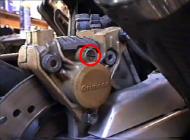 |
Use a flat head
screwdriver to remove the retention cap pictured here to reveal
the screw-in pin behind it. |
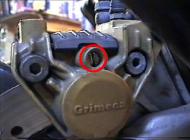 |
Loosen the pin just a
little, this is easier to do with the caliper still attached to
the bike. |
 |
Undo the two bolts
holding the caliper in place, use a 12mm socket or spanner. The
top one can be difficult to undo because of the exhaust being in
the way. |
 |
Check the pads for
wear, the ones pictured here are pretty much worn out. If they
are worn replace them if not skip to the end and re-attach the
caliper to the bike. |
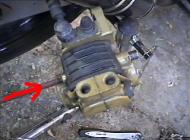 |
Undo the retention pin
with a screwdriver fully then use another screwdriver to push it
out letting the pads and clip fall out. |
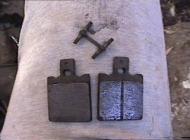 |
These pads are just
about worn to the end, the clip holds the pads steady inside the
caliper. |
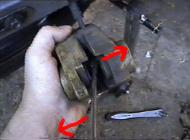 |
Since the pads are
worn down the pistons are pushed out and new pads won't fit into
the caliper. Use a screwdriver as a wedge to force the pistons
back into place. |
 |
Once the pistons are
flush the new pads will have room to fit. |
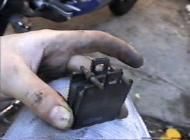 |
Place the pads
together with the clip resting on top and insert them into the
caliper, push the retention pin in then spread them apart with a
screwdriver so the disc will once again fit in between them. |
 |
Place the caliper
carefully back onto the disc and replace the two bolts. Tighten
the caliper back onto the mount. |
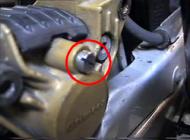 |
Tighten the retention
screw back into place. |
 |
Screw the retention
cap back in place in front of it and pump the brake lever a few
times to return pressure to the system. |

